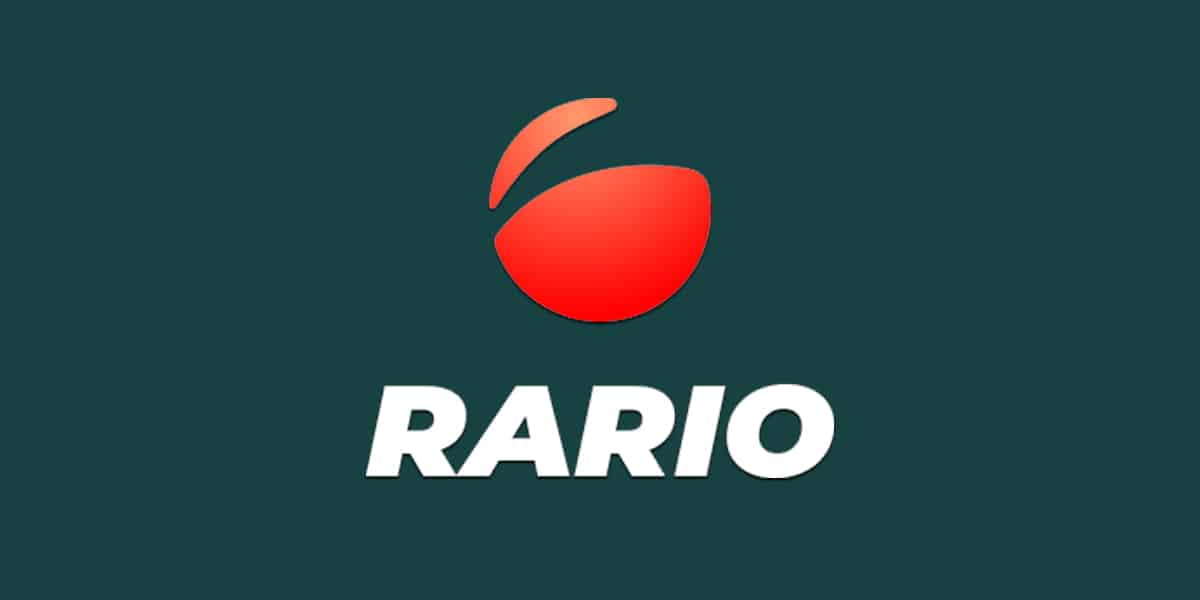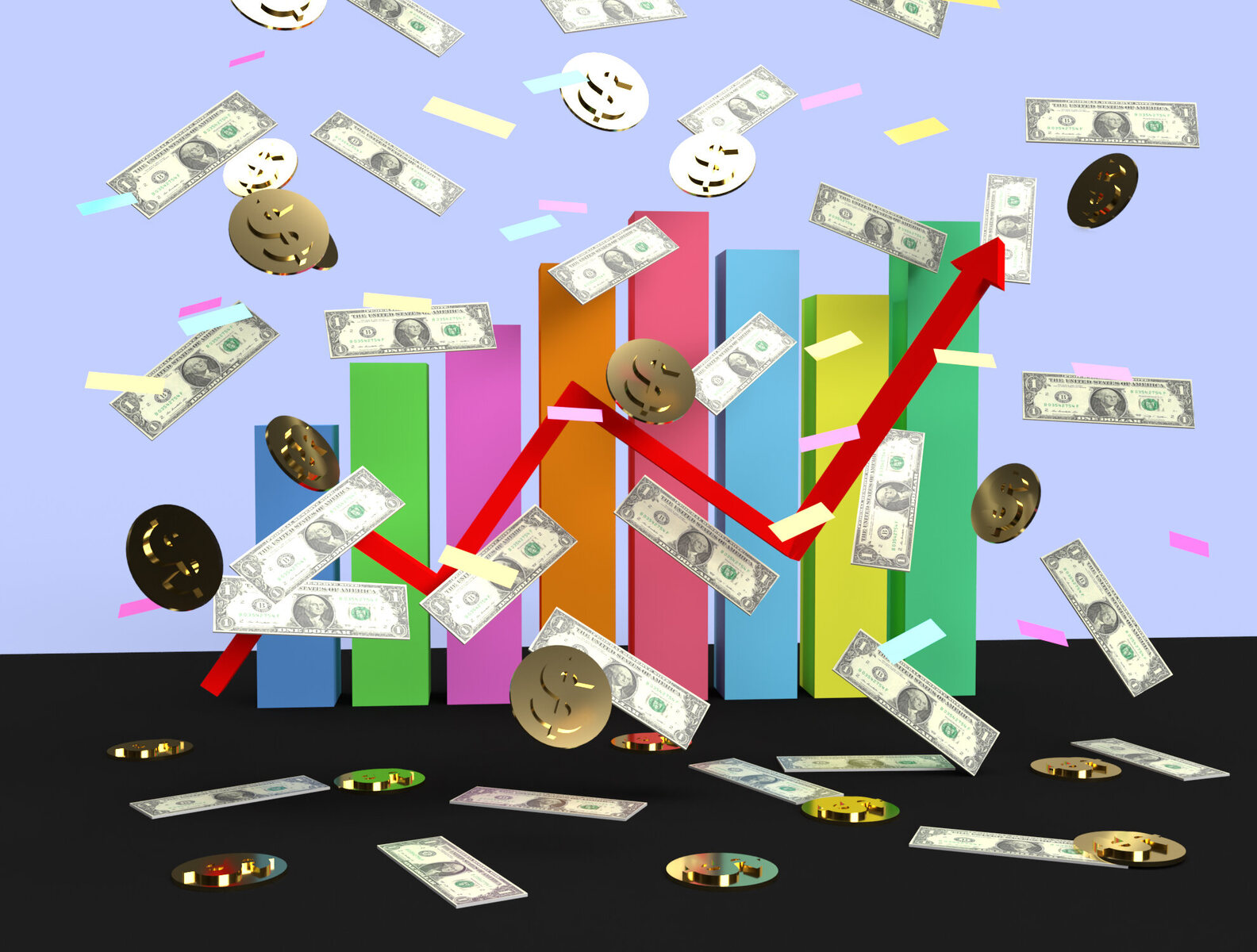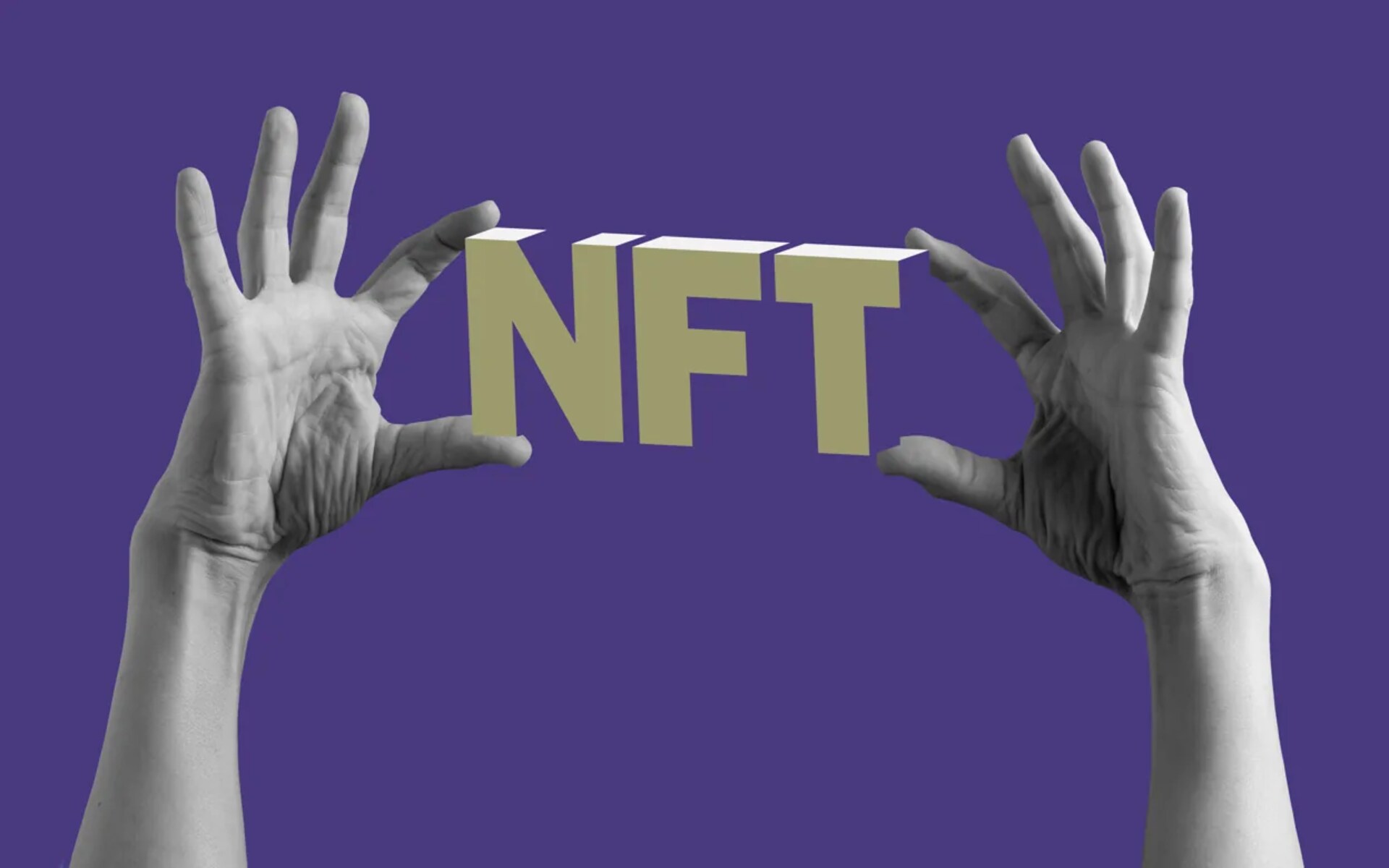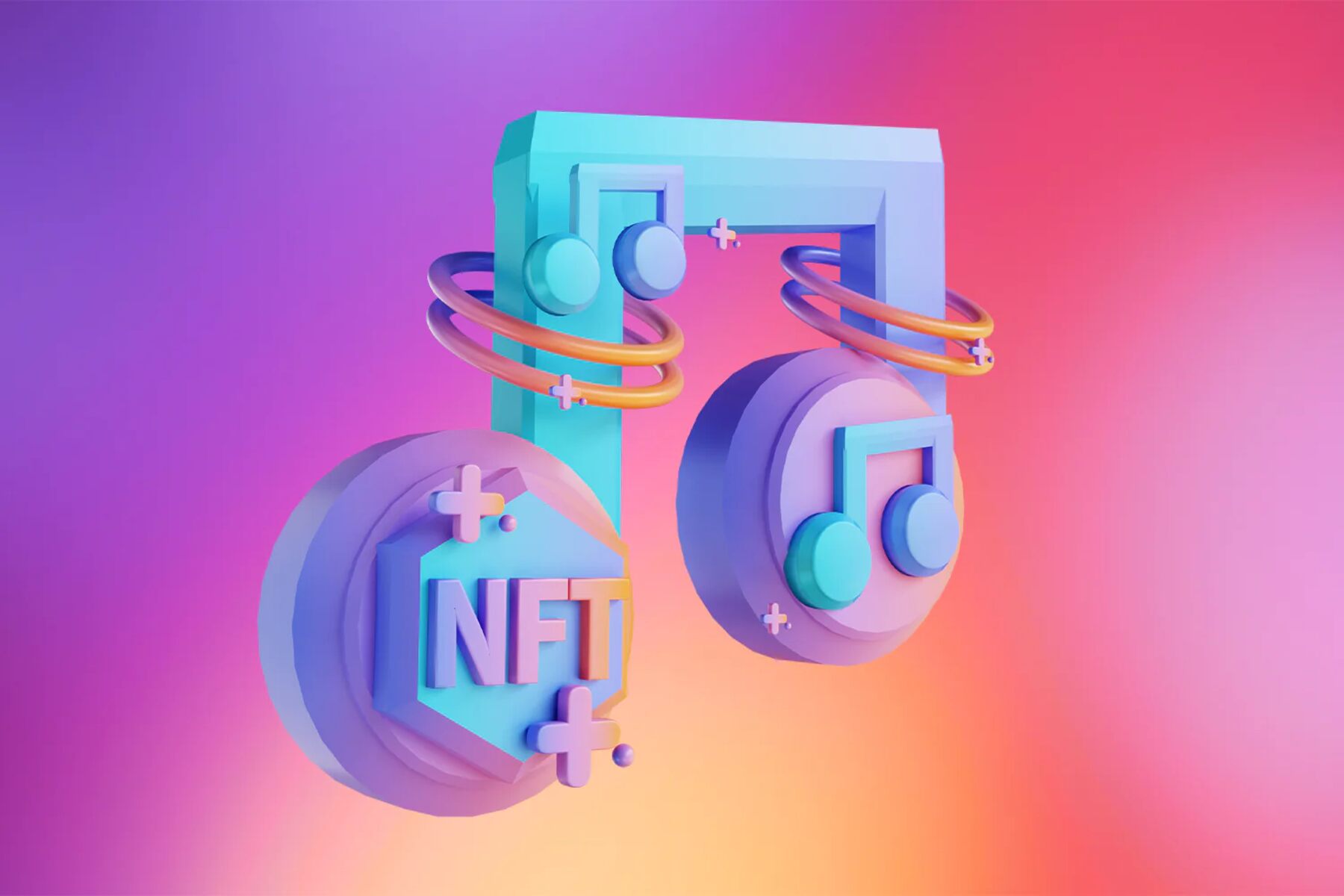Introduction
Welcome to the world of non-fungible tokens (NFTs), a rapidly growing sector in the digital art and collectibles market. NFTs have taken the art world by storm, offering a unique way to buy, sell, and trade digital assets. As with any investment, understanding the nuances of the market is crucial to maximize returns.
One term that frequently arises in the NFT space is “alpha.” If you’re new to NFT investing, you might be wondering what alpha means and how it relates to your investment strategy. In this article, we will delve into the concept of alpha in NFTs to help you navigate the exciting world of digital collectibles.
Alpha, in the context of NFTs, refers to the potential for outperforming the overall market and generating above-average returns. Essentially, it is the ability to identify undervalued assets or investment opportunities before they become mainstream. Alpha investors seek to gain an edge by spotting unique, undiscovered NFTs that have the potential to appreciate significantly in value.
While there is no surefire way to consistently achieve alpha in NFT investing, understanding the strategies and factors that influence alpha can increase your chances of success. By staying informed about emerging trends, leveraging market data, and assessing the quality and scarcity of the NFTs you invest in, you can position yourself to capitalize on alpha opportunities.
It’s essential to note that NFTs are still a relatively new and evolving market. The concept of alpha in NFTs is still being explored and defined. As the market matures and more data becomes available, the understanding of alpha in NFTs will continue to evolve. Therefore, it is crucial to stay up to date with the latest developments and adapt your investment strategy accordingly.
Now that we have a general understanding of alpha in NFTs, let’s explore its historical background and its role in NFT investing.
Definition of Alpha in NFT
In the world of investing, “alpha” is a term often used to describe the excess return generated by an investment strategy compared to a benchmark. In the context of non-fungible tokens (NFTs), alpha represents the potential for above-average returns on NFT investments.
To understand alpha in NFTs, it helps to first grasp the concept of beta. Beta represents the overall market performance. If an investment has a beta of 1, it is expected to perform in line with the overall market. Alpha, on the other hand, indicates whether an investment outperforms or underperforms the market.
In the NFT space, achieving alpha means identifying and acquiring NFTs that have the potential to appreciate in value at a greater rate than the overall market. This could be due to factors such as the artist’s reputation, scarcity of the NFT, utility or functionality within a larger ecosystem, or market demand.
Alpha in NFT investing can be seen as a measure of skill and expertise in identifying undervalued or overlooked assets. It involves conducting thorough research, analyzing market trends, and leveraging one’s understanding of the NFT space to make informed investment decisions.
It’s important to note that achieving alpha in NFTs is not guaranteed. The market for NFTs is still evolving and can be highly unpredictable. Factors such as changing trends, market sentiment, and new developments can significantly impact the value of NFTs. Alpha investors understand the risks involved and aim to navigate the market by identifying opportunities that offer a higher likelihood of generating alpha.
Having a solid understanding of alpha is crucial for NFT investors, as it helps in setting realistic expectations and assessing the performance of their investments. By striving to achieve alpha, investors aim to outperform the overall market and generate superior returns on their NFT holdings.
Now that we have explored the concept of alpha in NFTs, let’s delve into the historical background and the role of alpha in NFT investing.
Historical Background of Alpha in NFT
The emergence of non-fungible tokens (NFTs) as a viable digital asset class is relatively recent. The concept of alpha in NFTs has developed alongside the growth and evolution of the NFT market.
NFTs gained significant mainstream attention in 2017 when the Ethereum-based game CryptoKitties took the digital world by storm. This game allowed users to collect, breed, and trade unique digital cats, each represented as an NFT. The success and hype surrounding CryptoKitties sparked curiosity and interest in the concept of owning and trading digital assets on the blockchain.
As the NFT space expanded, more artists, creators, and entrepreneurs began entering the market, offering a wide range of digital collectibles, artwork, and virtual real estate. This proliferation of NFTs led to increased speculation and investment in the space.
The pursuit of alpha in NFTs became more prominent as investors realized the potential for significant returns by identifying and acquiring undervalued assets. The scarcity and uniqueness of NFTs further fueled the demand and allure of alpha opportunities.
Over time, various marketplaces and platforms emerged to facilitate the buying, selling, and trading of NFTs, such as OpenSea, Rarible, and SuperRare. These platforms provided a marketplace for artists, creators, and collectors to connect, resulting in increased liquidity and transparency within the NFT market.
Notable success stories of alpha in NFTs have further propelled the concept into the spotlight. A prime example is the digital artist Beeple, who sold an NFT artwork for a staggering $69 million in March 2021. This record-breaking sale brought attention to the potential value and financial opportunities associated with NFTs.
As the NFT market continues to evolve, the pursuit of alpha remains a key focus for investors. The growth and adoption of blockchain technology, as well as the integration of NFTs in various industries like gaming, music, and virtual reality, are expected to influence the alpha potential in the market.
It is important for investors to keep abreast of the historical developments and milestones in the NFT space to gain insights into the trends and factors that can impact alpha. Understanding the historical background of alpha in NFTs helps to set the context for its role in NFT investing, which we will explore in the next section.
Role of Alpha in NFT Investing
Alpha plays a crucial role in NFT investing as it represents the potential for generating above-average returns in the market. The pursuit of alpha is a fundamental objective for investors looking to maximize their profits and stand out from the crowd.
One of the primary roles of alpha in NFT investing is to identify undervalued assets or investment opportunities before they become mainstream. By doing so, investors can acquire NFTs at a lower price point, increasing their potential for future appreciation. This ability to spot hidden gems in the NFT market is what sets alpha investors apart.
Alpha investors often rely on their expertise, market insights, and analysis to uncover NFTs with unique qualities or characteristics that differentiate them from others. These could be NFTs created by emerging artists, NFTs with limited supply, or NFTs with utility or functionality that make them more valuable within a specific ecosystem.
Furthermore, alpha in NFT investing allows investors to take advantage of emerging trends and market inefficiencies. NFTs are a rapidly evolving and dynamic market, and identifying trends and opportunities before they become widespread can result in significant financial gains.
Another role of alpha in NFT investing is to assess the risk-reward ratio of various NFT investments. Alpha investors carefully evaluate the potential upside of an investment compared to the potential downside risks. This involves analyzing factors such as market demand, historical performance, artist reputation, and scarcity.
While alpha is often associated with outperforming the market, it’s important to note that it can also be achieved by mitigating losses during market downturns. A skilled alpha investor knows when to exit a position or reduce exposure to minimize losses when the market sentiment is turning bearish.
It’s worth mentioning that while alpha is a desirable outcome in NFT investing, it is not guaranteed. The NFT market is highly speculative and can be subject to extreme volatility. Investors should conduct thorough research, diversify their NFT holdings, and stay informed about market trends and developments to maximize their chances of achieving alpha.
In the next section, we will discuss the strategies that alpha investors employ in NFT investing to increase their potential for generating above-average returns.
Alpha Strategies in NFT Investing
In the pursuit of alpha in NFT investing, investors employ various strategies to identify undervalued assets and maximize their potential for generating above-average returns. These strategies leverage market insights, research, and expertise in the NFT space.
One common strategy used by alpha investors is conducting thorough research and analysis. This involves staying up to date with the latest trends, monitoring marketplaces, following industry news, and studying the work of artists and creators. By having a deep understanding of the NFT market, investors can spot emerging trends and identify artists or NFT projects with significant potential.
Another strategy is leveraging data and analytics to assess the historical performance and market demand of NFTs. Platforms like CryptoSlam and DappRadar provide valuable data on sales volumes, trading volumes, and popular NFT projects. Analyzing this data helps investors identify NFTs that have achieved consistent sales and popularity, indicating a higher likelihood for future appreciation.
Alpha investors also focus on identifying early-stage or upcoming NFT projects. This involves monitoring social media platforms, online forums, and NFT communities to uncover hidden gems that are not yet widely recognized. Spotting talented emerging artists or upcoming collaborations can lead to acquiring NFTs at a lower price point before their value increases.
Additionally, alpha strategies in NFT investing often involve identifying NFTs with unique qualities or utility. NFTs that offer additional functionality or exclusivity within gaming platforms or virtual worlds may have greater potential for appreciation. Investors look for NFTs that serve a purpose beyond mere ownership, as they can attract broader adoption and demand.
Diversification is another strategy employed by alpha investors. By spreading investments across multiple NFT projects, artists, and categories, investors can mitigate risk and increase the chances of capturing alpha. Diversification helps protect against the potential downfall of a single NFT investment and allows investors to participate in different sectors of the NFT market.
Lastly, alpha investors actively engage with NFT communities, artists, and collectors. By building relationships and networking within the NFT space, investors gain insights, build a reputation, and gain access to exclusive opportunities. Collaborations, partnerships, and early access to upcoming projects can provide an edge in identifying NFTs with alpha potential.
While these strategies can increase the chances of achieving alpha in NFT investing, it’s important to remember that the NFT market is highly speculative and unpredictable. Alpha investors should conduct their due diligence, exercise caution, and stay informed about market trends and developments.
In the next section, we will discuss how investors can assess the alpha potential in NFTs to make informed investment decisions.
Assessing Alpha Potential in NFTs
Assessing the alpha potential in non-fungible tokens (NFTs) is a critical aspect of making informed investment decisions. By evaluating various factors and conducting thorough analysis, investors can identify NFTs with a higher likelihood of generating above-average returns.
One key factor to consider is the reputation and track record of the artist or creator behind the NFT. Established artists with a strong following and a history of successful NFT sales may have a higher alpha potential. Their reputation can attract demand and increase the likelihood of future appreciation.
Scarcity is another crucial factor in assessing alpha potential. NFTs with limited supply or rarity are often more desirable and can command higher prices in the market. Assessing the scarcity of an NFT requires looking at factors such as the total supply, minting limitations, and the presence of unique traits or attributes.
Utility and functionality within a larger ecosystem can also contribute to the alpha potential of an NFT. NFTs that serve a purpose beyond simple ownership, such as providing access to exclusive content or granting special privileges in virtual worlds, may have greater demand and value. Evaluating the potential utility of an NFT within a specific ecosystem or industry is crucial for assessing alpha potential.
Market demand and trends play a significant role in determining alpha potential. Monitoring the overall market sentiment, analyzing transaction volumes, and identifying emerging trends can give insights into the demand for particular NFT categories or themes. Understanding the preferences and interests of NFT buyers and collectors helps investors identify NFTs with alpha potential.
Historical performance and sales data can provide valuable insights into the alpha potential of NFTs. Analyzing sales volumes, price trends, and the performance of similar NFTs in the past can indicate the potential for future price appreciation. Platforms like CryptoSlam and NFT marketplaces provide data that can be used to evaluate the historical performance of NFT projects.
Evaluating the quality and authenticity of an NFT is vital in assessing alpha potential. Investors should verify the provenance of the NFT, ensuring that it is genuinely unique and not subject to copyright infringement or plagiarism. Authenticity adds value to an NFT and can contribute to its alpha potential.
Furthermore, considering the broader market and economic factors can help assess the alpha potential in NFTs. Factors such as wider cryptocurrency market trends, regulatory developments, and macroeconomic conditions can influence the overall sentiment and demand for NFTs. Staying informed about these factors can provide valuable insights for alpha investors.
Combining these assessments and conducting thorough research helps investors identify NFTs with higher alpha potential. However, it’s important to note that alpha, by its nature, involves risk. The NFT market can be highly speculative and volatile, and no investment strategy can guarantee success. Therefore, investors should exercise caution, diversify their NFT holdings, and constantly adapt their strategy based on market conditions.
In the next section, we will explore the factors that can affect alpha in NFTs, as well as the risks and challenges associated with pursuing alpha in this market.
Factors Affecting Alpha in NFTs
Several factors play a significant role in determining the alpha potential of non-fungible tokens (NFTs). Understanding these factors is crucial for investors looking to capitalize on above-average returns in the NFT market.
First and foremost, market demand and investor sentiment heavily influence alpha in NFTs. The popularity of certain artists, genres, or themes can fluctuate over time, affecting the demand and value of associated NFTs. Factors like cultural trends, celebrity endorsements, and current events can impact market sentiment and drive demand for specific NFTs.
Scarcity is key when assessing alpha potential. NFTs with limited supply or unique traits are generally more valuable. Investors often seek out NFTs with rare attributes or editions, as they tend to command higher prices in the market. Scarcity is created through factors such as limited minting quantities, exclusive collaborations, or one-of-a-kind features.
The reputation and track record of artists and creators also influence the alpha potential of NFTs. Established artists with a strong following and a history of successful NFT sales may have a higher perceived value in the market. The artist’s brand, artistic style, and previous achievements can attract demand and amplify the alpha potential of their NFTs.
The broader crypto market can impact alpha in NFTs. Fluctuations in cryptocurrency prices and market sentiment often spill over into the NFT market. Bullish or bearish trends in cryptocurrencies can influence investor behavior and their willingness to invest in NFTs. Therefore, keeping an eye on the crypto market can provide insights into the alpha potential of NFTs.
Technological advancements and innovations also affect alpha in the NFT space. Emerging blockchain platforms, improved scalability, and enhanced user experiences can attract more participants and drive demand for NFTs. NFT marketplaces and platforms that offer unique features, intuitive interfaces, and strong community engagement tend to provide a conducive environment for alpha opportunities to flourish.
Regulatory developments and legal considerations can impact the alpha potential of NFTs. Changes in regulations surrounding NFTs, intellectual property rights, or the blockchain industry as a whole can influence investor confidence and market dynamics. Keeping track of regulatory developments is crucial to assess the risks and opportunities related to alpha in NFTs.
Finally, macroeconomic conditions and global events can shape the alpha potential in the NFT market. Economic downturns, geopolitical tensions, or significant cultural shifts can influence investor sentiment and spending patterns. Understanding how these factors impact the overall sentiment towards NFTs can help investors navigate and identify alpha opportunities.
By considering these factors, investors can gain valuable insights into the alpha potential of NFTs. However, it’s essential to recognize that the NFT market is dynamic and constantly evolving. Factors affecting alpha can change rapidly, requiring investors to adapt their strategies accordingly.
While alpha potential exists in the NFT market, it’s important to acknowledge the risks and challenges associated with pursuing alpha, which we will explore in the next section.
Risks and Challenges in Pursuing Alpha in NFTs
Pursuing alpha in non-fungible tokens (NFTs) can be a rewarding endeavor, but it is not without its risks and challenges. Understanding and mitigating these risks is essential for investors seeking above-average returns in the NFT market.
One of the main risks in pursuing alpha in NFTs is market volatility. The NFT market is relatively new and can experience significant price fluctuations. NFT values can experience rapid inflation or deflation, driven by speculative buying and selling. Investors need to be prepared for the possibility of sudden price drops or sudden surges in the market.
Lack of liquidity is another challenge in the NFT market. While liquidity has improved with the rise of NFT marketplaces, there is still a risk of difficulty in selling NFTs quickly and at the desired price. Investors should carefully consider the liquidity of an NFT before investing, as illiquid assets can limit the ability to exit a position or adjust investment strategies in a timely manner.
Counterfeit or plagiarism risks exist in the NFT ecosystem. Given the digital nature of NFTs, there is a possibility of fraudulent or unauthorized copies being circulated. Investors must conduct due diligence to ensure the authenticity and provenance of the NFTs they are considering purchasing. Verification of originality and authenticity is crucial to avoid investment in counterfeit or plagiarized NFTs.
Regulatory uncertainties are also a concern when pursuing alpha in NFTs. The regulatory landscape surrounding NFTs is still evolving, and there is a risk of future regulations impacting the market. Changes in regulations can influence investor confidence, asset valuations, and the overall market sentiment. Staying informed and complying with applicable laws and regulations is essential to mitigate regulatory risks.
Market saturation is a challenge in the NFT space. With the increasing popularity of NFTs, more artists, creators, and investors are entering the market. Increased competition can make it harder to identify undervalued assets or opportunities for alpha. Investors need to carefully evaluate the quality, uniqueness, and long-term potential of NFTs to avoid overpaying or investing in overhyped assets.
Lastly, the hype-driven nature of the NFT market poses a risk of irrational exuberance. FOMO (fear of missing out) can lead to impulsive investment decisions, driven by the fear of missing out on potential high returns. Investors should exercise caution, conduct proper research, and maintain a disciplined approach to avoid falling prey to inflated hype.
Overall, pursuing alpha in NFTs carries inherent risks and challenges. Investors must be mindful of market volatility, liquidity concerns, counterfeit risks, regulatory uncertainties, market saturation, and irrational exuberance. Diligence, thorough research, and a long-term investment perspective can help mitigate these risks and increase the chances of generating above-average returns in the NFT market.
In the concluding section, we will summarize the key points discussed in this article about alpha in NFTs.
Conclusion
The concept of alpha in non-fungible tokens (NFTs) encompasses the potential for outperforming the overall market and generating above-average returns. Pursuing alpha in NFTs requires a deep understanding of the market, thorough research, and strategic decision-making.
Throughout this article, we have explored the definition of alpha in NFTs and its historical background. We discussed its role in NFT investing, highlighting the importance of identifying undervalued assets and leveraging market insights to maximize returns. Additionally, we explored various alpha strategies in NFT investing, including conducting research, analyzing data, and diversifying investments.
We also delved into the factors that can affect alpha in NFTs, such as market demand, scarcity, artist reputation, technological advancements, and macroeconomic conditions. Understanding these factors is crucial for assessing the alpha potential of NFTs and making informed investment decisions.
However, pursuing alpha in NFTs is not without risks and challenges. Market volatility, lack of liquidity, counterfeit risks, regulatory uncertainties, market saturation, and irrational exuberance are all factors that investors must consider and mitigate.
In summary, while alpha potential exists in the NFT market, investors must approach it with caution and discipline. Thorough research, staying informed about market trends, assessing the quality and value of NFTs, and diversifying investments are essential for maximizing the chances of generating above-average returns.
As the NFT market evolves and matures, the concept of alpha may continue to evolve as well. Keeping a finger on the pulse of the industry, adapting to market developments, and continuously learning will be crucial for investors seeking alpha in this dynamic and exciting space.
By understanding and navigating the intricacies of alpha in NFTs, investors can position themselves to capitalize on the vast opportunities presented by this emerging asset class.

























